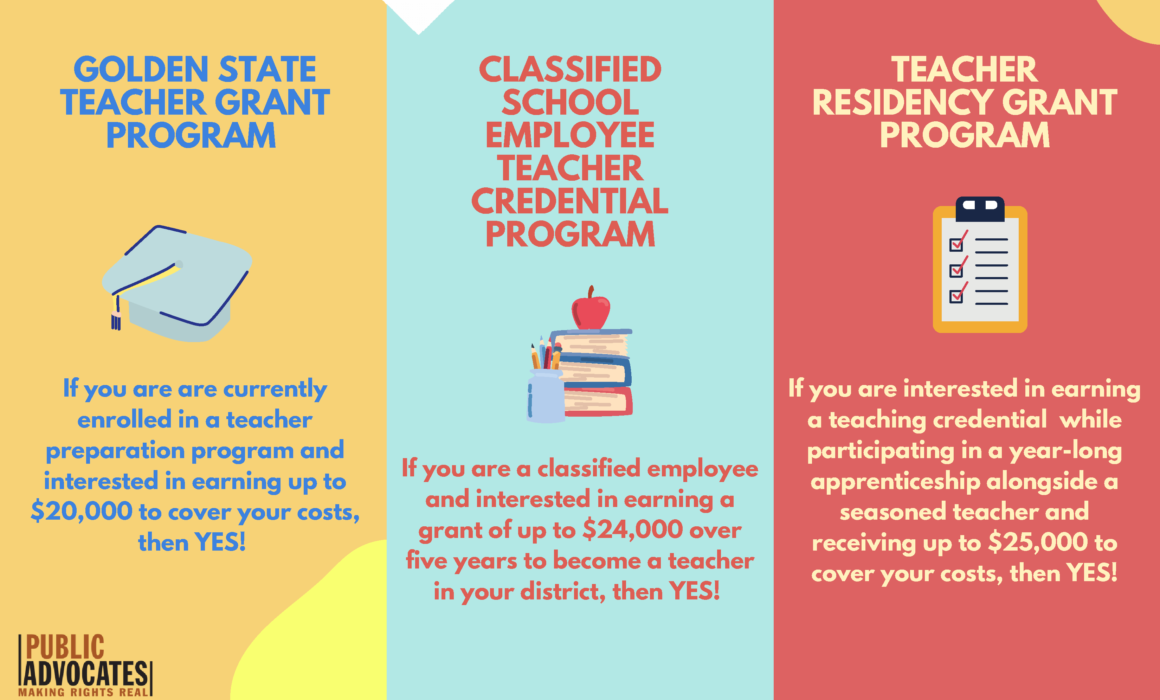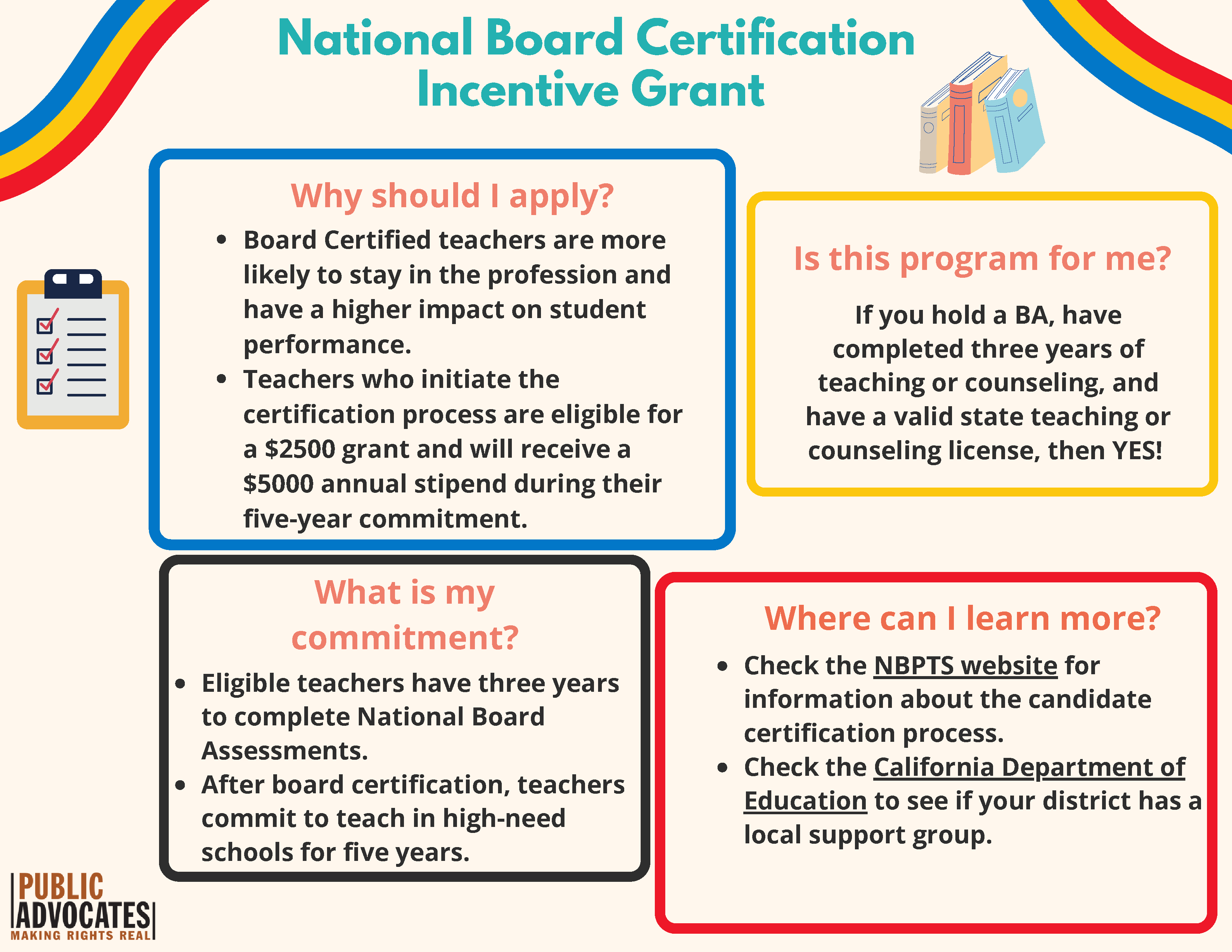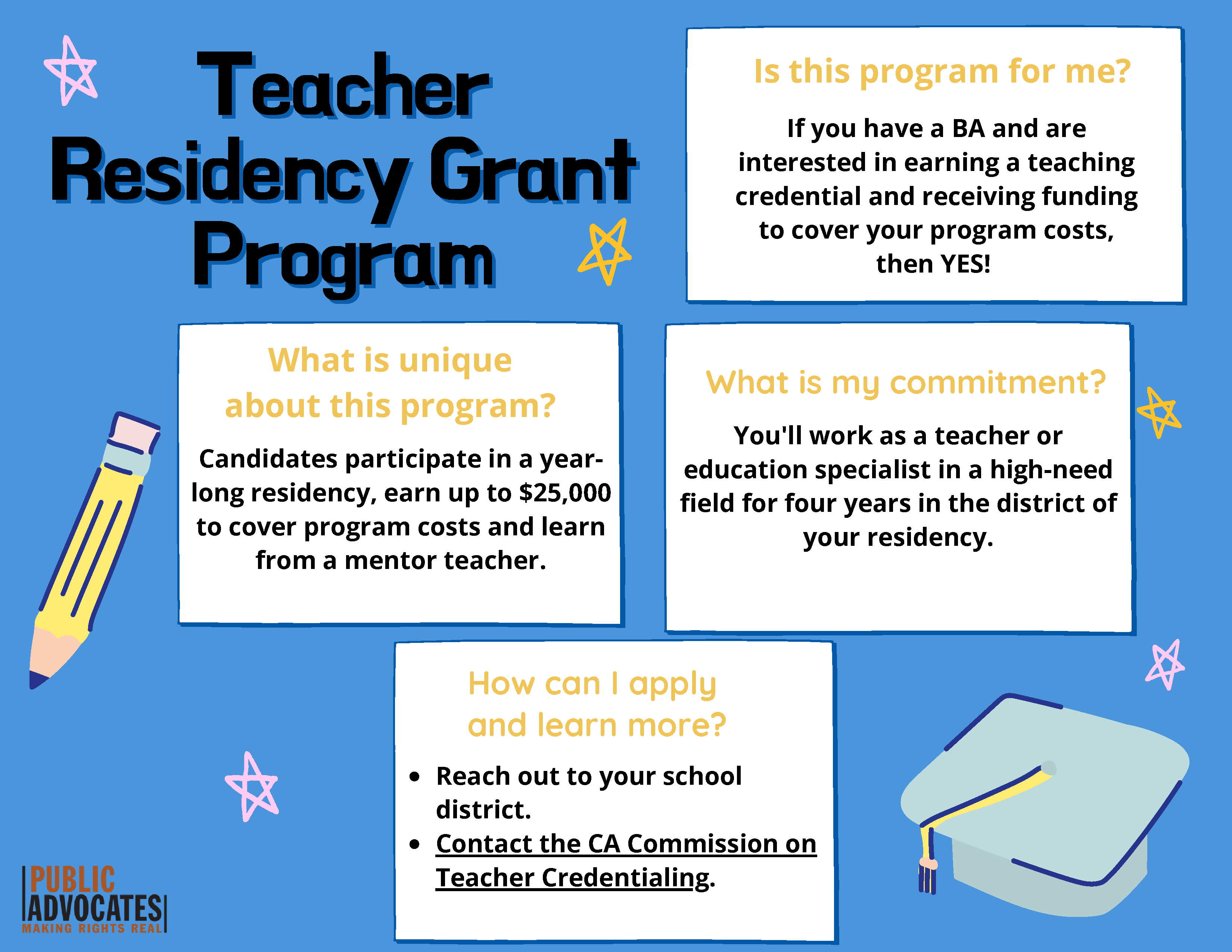
Four innovative programs are poised to expand and diversify the educator workforce and bring more talented and prepared teachers to California’s high-needs schools.
This summer, Gov. Gavin Newsom signed AB 130, which allocates approximately $3 billion to educator preparation, training and recruitment programs. This tremendous investment in educators and educators-to-be speaks to the current situation: a pandemic that has exacerbated the already-severe teacher shortage in our state and across the nation. Expanding and diversifying our workforce of teachers and incentivizing experienced teachers to teach in high-needs schools and fields are critical strategies to increase the number of educators in the state.
The new opportunities:

1. Classified School Employee Teacher Credentialing Program
This program offers up to $24,000 over five years to classified employees, such as tutors, administrative assistants, paraprofessionals, bus drivers and custodial staff, to earn teaching credentials and continue serving their school districts as teachers.

2. National Board Certification Incentive Grant
This program offers eligible teachers $2,500 to initiate the highly regarded National Board Certification process for teaching excellence, and a $5,000 annual stipend for each year of their five-year commitment to teach in high-priority schools.

3. Golden State Teacher Grant Program
This grant offers up to $20,000 to education students currently enrolled in a professional teacher preparation program in high-needs fields such as special education, multiple-subject teaching instruction, transitional kindergarten, bilingual education, and STEM (science, technology, engineering and mathematics, plus computer science and other areas). The grants cover teacher internships and teacher residency programs. Upon completing their programs, teachers commit to teaching at a California priority school for four years. (Note: “STEM” is the language used in the program description.) For details, visit the California Student Aid Commission.

4. Teacher Residency Grant Program
This program offers candidates the opportunity to participate in yearlong residencies, learn from a mentor teacher, and earn up to $25,000 to cover their program costs. Building on the medical residency model, teacher residencies provide an alternative pathway to teacher certification grounded in deep clinical training. Residents apprentice alongside an expert teacher in a high-needs classroom for a full academic year. They take closely linked coursework from a partnering university that leads to a credential and a master’s degree at the end of the residency year. They receive living stipends and tuition support as they learn to teach. In exchange, they commit to teaching in the district for three to five years beyond the residency. This model fosters tight partnerships between local school districts and teacher preparation programs. Residencies recruit teachers to meet district needs, usually in shortage fields, and rigorously prepare them and keep them in the district. For details, visit the California Commission on Teacher Credentialing.
Research from the Learning Policy Institute (LPI) shows that increasing teacher diversity has many positive academic and social-emotional benefits for students of color. Outcomes include increased reading and math scores, improved graduation rates, and less chronic absenteeism. According to LPI, “Teacher diversity may also benefit teachers of color who experience feelings of isolation, frustration and fatigue when there are few other teachers of color in their schools. Increasing teacher diversity may improve satisfaction for teachers of color and decrease turnover, a key contributor to teacher shortages and school instability.”
However, teachers of color face several systemic barriers to recruitment and retention that have been exacerbated by the pandemic, including insufficient access to funding to pay for tuition and housing while earning their credentials, lack of adequate preparation and mentoring, and disparate pass rates of licensure exams. This is even more troubling since research shows that underprepared and undersupported teachers leave the profession at a rate that is two to three times higher than fully prepared and supported teachers.
Fortunately, this year’s state budget could prove to be a game-changer for teacher candidates, as it offers them coursework alternatives to standardized basic skills, subject-matter competency and reading instruction tests. (The nonprofit Public Advocates has been pushing for decades for such reasonable alternatives to what can often be racially and culturally biased standardized teacher tests.)
Investments in residencies and other sustainable and high-retention pathways such as those made this year can also mitigate barriers to access and pave the way for the strong, diverse and stable workforce that California needs. High-quality teacher residencies can prepare effective teachers who stay in the profession, helping to reduce high rates of teacher turnover and end the revolving door of educators in the highest-need schools. In addition, residencies, when adequately funded, often provide financially feasible pathways for candidates and are more likely to recruit teachers of color than other pathways into teaching.
Adapted from an article by Public Advocates Inc. and The California Teacher Residency Lab.
The Discussion 0 comments Post a Comment